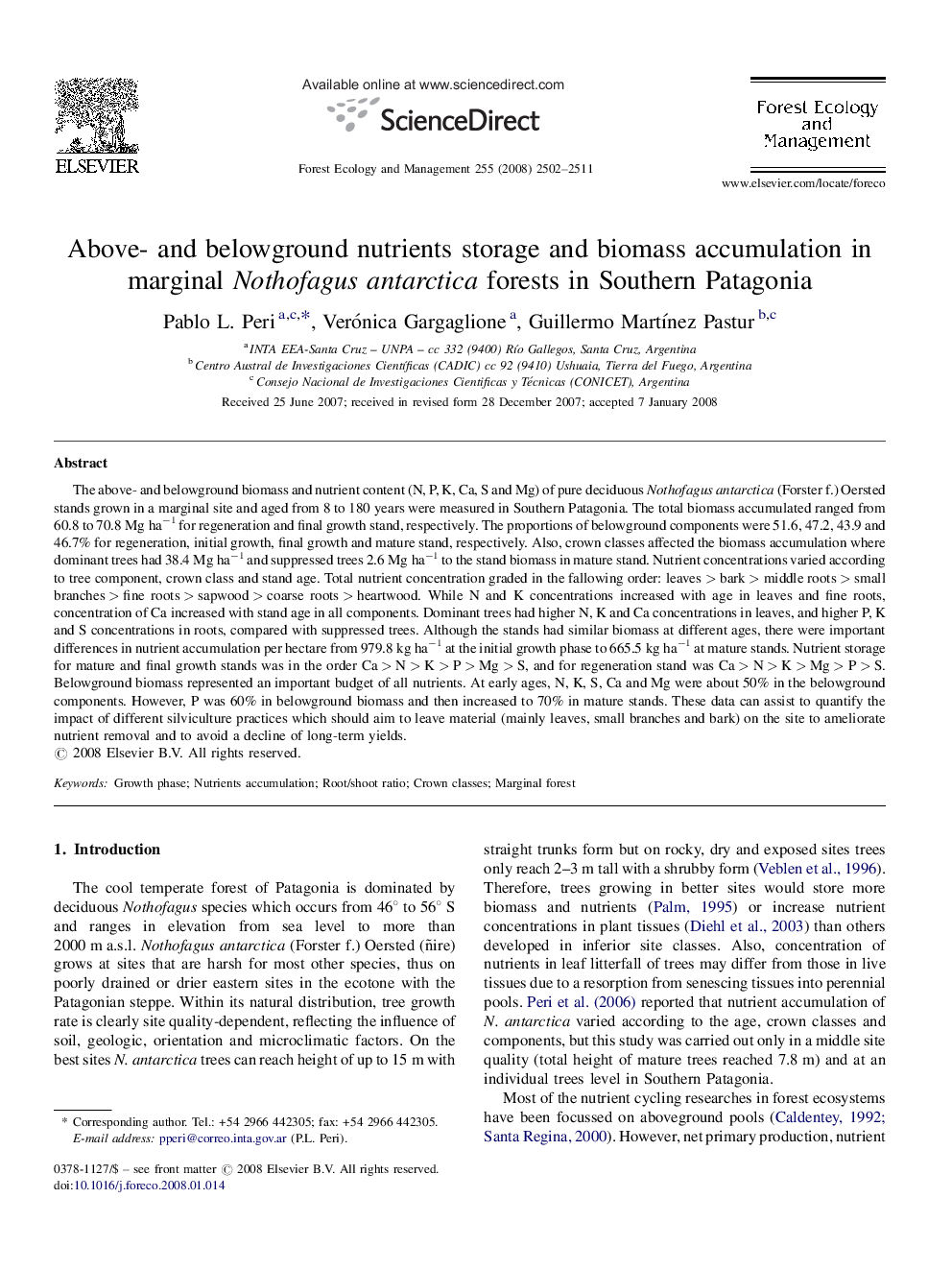| کد مقاله | کد نشریه | سال انتشار | مقاله انگلیسی | نسخه تمام متن |
|---|---|---|---|---|
| 89386 | 159340 | 2008 | 10 صفحه PDF | دانلود رایگان |

The above- and belowground biomass and nutrient content (N, P, K, Ca, S and Mg) of pure deciduous Nothofagus antarctica (Forster f.) Oersted stands grown in a marginal site and aged from 8 to 180 years were measured in Southern Patagonia. The total biomass accumulated ranged from 60.8 to 70.8 Mg ha−1 for regeneration and final growth stand, respectively. The proportions of belowground components were 51.6, 47.2, 43.9 and 46.7% for regeneration, initial growth, final growth and mature stand, respectively. Also, crown classes affected the biomass accumulation where dominant trees had 38.4 Mg ha−1 and suppressed trees 2.6 Mg ha−1 to the stand biomass in mature stand. Nutrient concentrations varied according to tree component, crown class and stand age. Total nutrient concentration graded in the fallowing order: leaves > bark > middle roots > small branches > fine roots > sapwood > coarse roots > heartwood. While N and K concentrations increased with age in leaves and fine roots, concentration of Ca increased with stand age in all components. Dominant trees had higher N, K and Ca concentrations in leaves, and higher P, K and S concentrations in roots, compared with suppressed trees. Although the stands had similar biomass at different ages, there were important differences in nutrient accumulation per hectare from 979.8 kg ha−1 at the initial growth phase to 665.5 kg ha−1 at mature stands. Nutrient storage for mature and final growth stands was in the order Ca > N > K > P > Mg > S, and for regeneration stand was Ca > N > K > Mg > P > S. Belowground biomass represented an important budget of all nutrients. At early ages, N, K, S, Ca and Mg were about 50% in the belowground components. However, P was 60% in belowground biomass and then increased to 70% in mature stands. These data can assist to quantify the impact of different silviculture practices which should aim to leave material (mainly leaves, small branches and bark) on the site to ameliorate nutrient removal and to avoid a decline of long-term yields.
Journal: Forest Ecology and Management - Volume 255, Issue 7, 20 April 2008, Pages 2502–2511